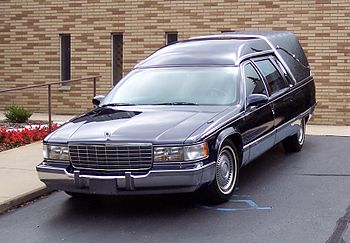| English: Skull and crossbones (Photo credit: Wikipedia) |
So someone is dead. The body was collected. And now you're at the point where your plot needs scientific data. Decisions must be made.
All deaths are given a CAUSE and a MANNER. Though either or both can be listed as unknown. This is particularly true if the remains have decayed substantially. (See skeletal remains HERE)
Why = cause of death - what trauma or happening terminated the
person's life?
How = manner of death
* In most of US there are only five reasons for a death:
1. Natural
2. Accidental
3. Homicide
4. Suicide
5. Unknown
In some states a 6th manner is:
6. Therapeutic - this relates to a death that is the result of a medical intervention
Ultimately, it is the CORONER or MEDICAL EXAMINER (this depends on the location) who makes the decision about what is listed as the cause and manner of the death.
The CSIs, anthropologists etc. inform the Coroner or Medical Examiner by presenting their scientific findings.
Only about 1/2 of the United States uses the coroner system. A coroner is an elected county official who may or may not be a medical doctors.
Go HERE for more information.
It is usually a part time job with a small income.
Only 4 states require their coroners to be medical doctors: Ohio, Kansas, Louisiana, North Dakota
Because coroners are often elected officials, there are often problems with on-going cases and transferring/losing files. This might be a good place to twist your investigatory plot.
The coroners do not do autopsies. Their job is to certified deaths in their jurisdiction and order an autopsy when one is required. Smaller jurisdictions will contract with larger areas to do their autopsies.
Some states have opted out of the coroner system and use instead a MEDICAL EXAMINER or MEDICAL INVESTIGATOR. So you will want to do some research into the state/jurisdiction in which the body is found in your plot line.
For more information go HERE.
ME or MI are usually appointed individuals with educational backgrounds in medicine and death investigation.
Autopsies are conducted by MD and DO who have specialized training.
- Pathologists with specialized training in understanding the disease and traumas in/on a body such as
- High energy impact
- Stabbings
- Gun shot wounds
- Poisons
- They need to be able to tell what was a disease prior to death and what was a trauma that created the death.
In the Morgue
- The body is logged in.
- Anything that came with them is catalogued.
- The body is weighed and measured.
- The pathologist and coroner will decide on the timing of the autopsy. Is this an urgent case? Should it be bumped to
- The front of the line? For example, is there is a killer on the loose?
- The police might need the findings quicker than if they are looking at a probably heart attack.
- The body is then stored in a cooler.
The Autopsy -
- Performed on bodies in the early stages of decay.
- In bigger offices, consultations often happen. They often have regular meetings to discuss various cases. So you could plot different individuals with varying backgrounds weighing in.
External Exam
- A complete external exam is conducted clothes
- Notes and photographs are taken
- This initial exam is very important because the condition of the body is about to be forever changed.
- Looking for trace evidence like
- gunpowder residue (go HERE)
- fiber evidence
- Once collected the trace evidence will be sent to a crime Laboratory for further investigation.
- Whole body X-rays can be taken to look for broken bones, foreign objects such as bullets, and previous surgical hardware that might be helpful in identification of an unknown body.
- Then the clothes are removed.
- Further tests are performed.
- They look for other hair - ex. they might comb the pubis looking for pubic hair as a part of a rape kit. (hair forensics HERE)
- They might take fluid samples. For example, they might look For/collect semen in the vagina or anus. (serology forensics HERE)
- Once all trace evidence is collected the body will be washed if it is needed.
- A second external exam takes place, with photography of surface trauma. Also, anything that might be useful in determining identity such as past scarring, and tattoos.
- Sometimes they will take fingerprints which they run through IAFIS (fingerprint forensics go HERE)
Internal Exam
- Y incision from clavicle to sternum, and then down to the pubic bone.
- Skin is pulled back and the ribs will be examined
- A rib spreader and scalpel are used to expose the organs under the rib cage and sternum
- A visual exam is done first called an In Situ exam.
- Individual organs are removed.
- Each organ is weighed, measured.
- Tissue samples are processed and turned into microscope slides for viewing by slicing them with a microtome. The exam is called a histological exam.
- Fluids are collected for the toxicology lab (go HERE). The fluids might also be sent to labs to look for bacteria and viruses (this is NOT routine).
- Brain - the scalp is cut and pulled down over the face (so that it can be put back in place if the family wants to have an open casket funeral.) A bone saw cuts open the skull cap. The brain can be examined in place and/or can be removed. This is processed differently than organs.
- Sometimes the skin on the limbs is opened to see if there are signs of trauma beneath the skin. In people with dark skin, for example, bruising is not always as obvious on the surface of the skin.
Finishing Up
Once all of the tests are run, the pathologist moves on to the next body. The morgue attendants close up the body.
- The organs are put in a plastic bag and placed in the cavity so the body doesn't look deflated - they are not in their anatomical position.
- Skull cap is replaced
- Sutures are put in place to close the skin.
The Family -
- On occasion will need to identify the body
- Also works to with the coroner/pathologist to get the medical and dental records to the staff.
- Will give permission to harvest organs for donation if the organs are still viable.
The body is released to the funeral home if they know the name of the remains. If the remains are unidentified, then a decision is made on how long/what the officials will do with the remains.












